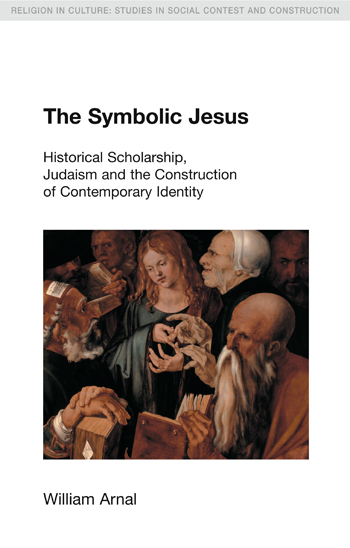 In The Symbolic Jesus: Historical Scholarship, Judaism and the Construction of Contemporary Identity, William Arnal gives us a reasonable explanation for why Historical Jesus scholars today are characterized by:
In The Symbolic Jesus: Historical Scholarship, Judaism and the Construction of Contemporary Identity, William Arnal gives us a reasonable explanation for why Historical Jesus scholars today are characterized by:
- a general assumption that the gospel narratives reflect at some level genuine historical events;
- a minimizing of the criterion of dissimilarity;
- a preference for a criterion of plausibility;
- an explicit, even strident, emphasis on Jesus’ “Jewishness”;
- a preference to present themselves as historians more than theologians.
In other words, whatever happened to Rudolf Bultmann and good-old scholarly scepticism?
Arnal’s discussion is a broad one encompassing scholarly, political, religious and cultural identities. This posts focuses on only the scholarly identity. I give some of the background relevant to this new scholarly identity formation since the 1970s and 1980s since it helps us understand more completely what has been going on that has led theologians to stress their apparent credentials as historians.
Up until the 1970s and 1980s New Testament scholarship was dominated by “Bultmannian, post-Bultmannian, or Bultmann-trained scholars”.
The “New Quest” for the Historical Jesus is traditionally said to have begun in 1953 with a publication by Ernst Käsemann arguing that the only way to be assured a saying of Jesus was authentic was that it stood distinct from both Christianity and Judaism. This was called the criterion of double dissimilarity. It did not mean that Jesus said nothing that overlapped with distinctively Jewish or Christian ideas but that the only ones we could be reasonably confident came from Jesus were those that were dissimilar to both.
Ernst Käsemann was a student of Bultmann.
Other scholars prominent in this “New Quest” (that is, the apparent revival of Historical Jesus studies after Albert Schweitzer is said to have closed the curtain on the “First Quest”) have been
- James M. Robinson — an American, but whose D. Theol was from Basel;
- Norman Perrin — an American, not a student of Bultmann but a student of Jeremias.
This “New Quest” throughout the 1950s and 1960s, in both Europe and North America, could be most distinctively described as follows:
- A focus on the sayings of Jesus as the key to understanding Jesus;
- Emphasis on the criterion of double dissimilarity as the key to identifying authentic sayings of Jesus;
- A “considerable skepticism about the historicity of any of the gospel material, especially narrative but also sayings materials’ (The Symbolic Jesus, p. 41).
But Arnal points out that all of that changed “with a vengeance” in the 1970s and 1980s.
“The Third Quest”
Continue reading “Why Today’s Theologians Call Themselves Historians”
